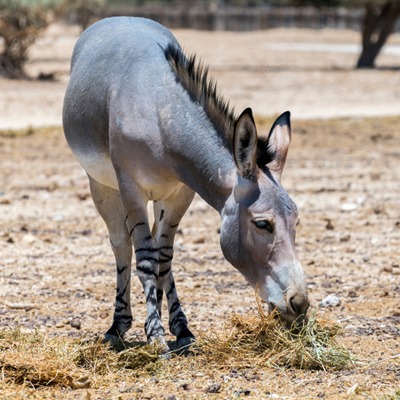
About Somali Wild Ass
Somali wild asses are found in Eritrea, Ethiopia, and Somalia. Due to poaching and encroachment on their land by other herds, Somali wild asses are critically endangered — there are fewer than 1,000 left in the wild.
Habitat
Native to the rocky desert of eastern Africa, Somali wild asses live in semi-arid bush, grasslands, and hilly deserts.
Diet
Somali wild asses eat desert plants, grasses, and shrubs.
Family Life
This mammal typically lives alone due to the scarcity of food in environments where they are found. However, small groups will occasionally form when food and water are more plentiful. They commonly begin breeding around two years old.
Conservation Status
The conservation status of the Somali Wild Ass is classified as critically endangered.
Threats
- A major threat to their population includes local inhabitants hunting the Somali wild ass for food and for medicinal purposes.
- This animal also faces the threat of habitat loss due to agriculture in their surrounding areas and competition with livestock for food and water.
Facts about Somali Wild Ass
Class:
Mammalia (mammals)Order:
Perissodactyla (odd-toed ungulates)Family:
Equidae (layman)Genus:
Equus (layman)Species:
Equus africanus (layman)Life Span:
Up to 40 yearsSize:
6.6 feet long (2 m)Height:
4.2 – 5.5 feet (at shoulder) (1.3 – 1.7 m)Weight:
Up to 605 pounds (275 kg)
Fun Facts
- They can run up to 30 miles per hour — talk about fast!
- Spanish explorers brought what are now Somali wild asses to the southwestern United States in the 16th century.
- They are the last remaining ancestors of the modern donkey.
- Of all wild equids (horses, asses, and zebras), Somali wild asses are the smallest.